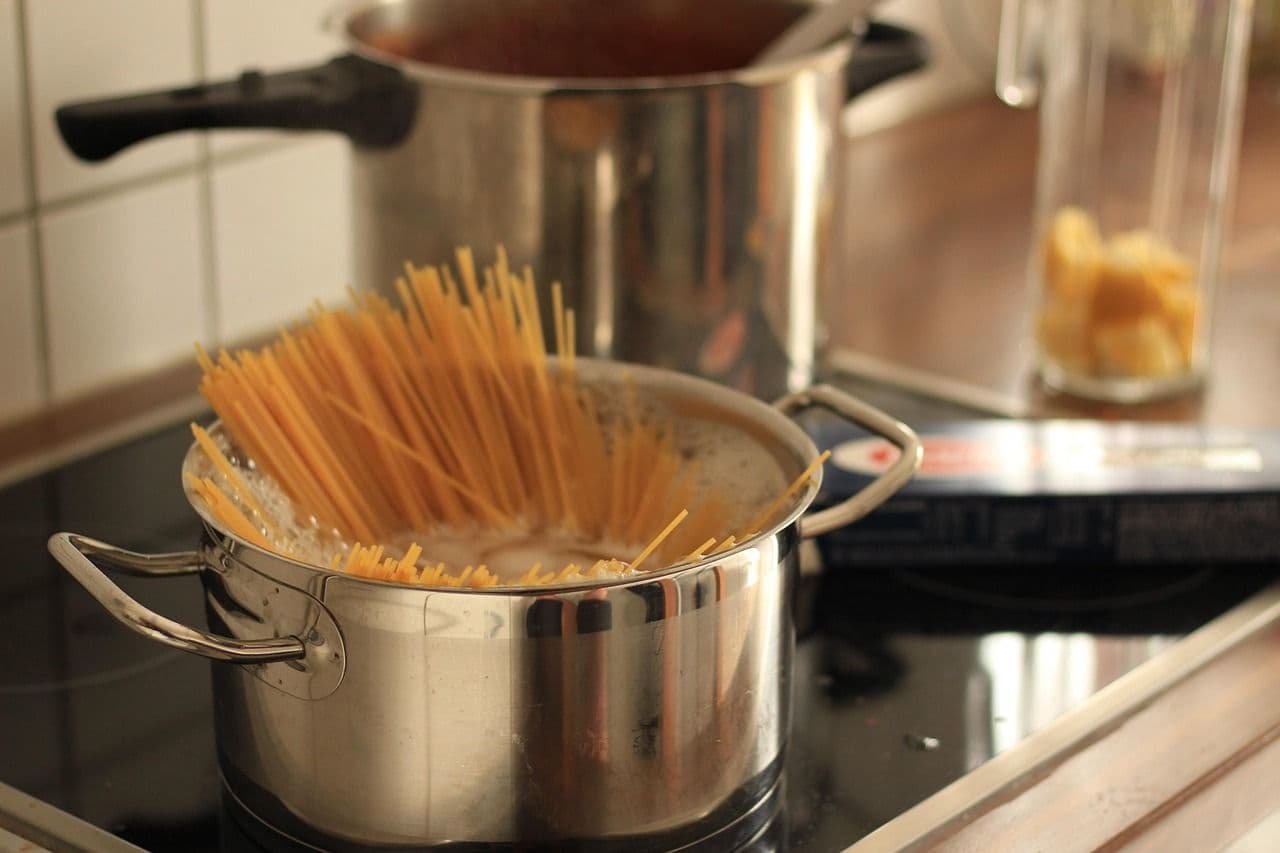Lifestyle
Scientists Reveal Salt’s Role in Perfect Pasta Texture

New research highlights the significant impact of salt on the cooking of pasta, revealing that the right amount not only enhances flavor but also influences the texture and overall dining experience. Scientists suggest using 7 grams of salt per liter of water, which amounts to approximately 1.25 teaspoons. This guideline aims to prevent spaghetti from becoming overcooked and mushy.
According to a study published in the journal Food Hydrocolloids, the addition of an appropriate salt quantity maintains the structural integrity of spaghetti while it cooks. Dr. Andrea Skoti, a senior lecturer in physical chemistry at University of Lund, explains, “Cooking pasta with the right amount of salt is not just a matter of taste; it affects the microstructure of the pasta, thereby influencing the dining experience.”
The research team utilized advanced techniques, including particle accelerators and neutron devices, to analyze the changes occurring within pasta during cooking. Their findings indicate that the ideal texture is achieved after approximately 10 minutes of cooking time, where the gluten in traditional spaghetti acts as a protective network that retains starch.
The study also observed that gluten-free pasta showed significant structural damage when cooked for 13 minutes in highly salted water, while regular pasta exhibited greater resilience and flexibility. These insights could pave the way for developing better and more durable gluten-free pasta alternatives.
In addition to the right salt content, nutritionist Kevin David Rejl suggests another tip for pasta enthusiasts: allow pasta to cool before consuming it. As pasta or rice cools, starch molecules transform into a form known as resistant starch. “Unlike regular carbohydrates, resistant starch acts like fiber — it digests more slowly, providing a steady release of energy and helping maintain stable blood sugar levels,” Rejl notes.
This cooling trick is reportedly used by professional athletes, including football players, to sustain energy levels, improve recovery, and manage body weight effectively.
The insights from this research provide not only a pathway to better pasta cooking but also underscore the importance of salt in food preparation, influencing both flavor and health benefits.
-

 Health2 months ago
Health2 months agoNeurologist Warns Excessive Use of Supplements Can Harm Brain
-

 Health3 months ago
Health3 months agoFiona Phillips’ Husband Shares Heartfelt Update on Her Alzheimer’s Journey
-

 Science4 weeks ago
Science4 weeks agoBrian Cox Addresses Claims of Alien Probe in 3I/ATLAS Discovery
-

 Science3 weeks ago
Science3 weeks agoNASA Investigates Unusual Comet 3I/ATLAS; New Findings Emerge
-

 Science3 weeks ago
Science3 weeks agoScientists Examine 3I/ATLAS: Alien Artifact or Cosmic Oddity?
-

 Science3 weeks ago
Science3 weeks agoNASA Investigates Speedy Object 3I/ATLAS, Sparking Speculation
-

 Entertainment4 months ago
Entertainment4 months agoKerry Katona Discusses Future Baby Plans and Brian McFadden’s Wedding
-

 World2 months ago
World2 months agoCole Palmer’s Cryptic Message to Kobbie Mainoo Following Loan Talks
-

 Entertainment4 months ago
Entertainment4 months agoEmmerdale Faces Tension as Dylan and April’s Lives Hang in the Balance
-

 Science3 weeks ago
Science3 weeks agoNASA Scientists Explore Origins of 3I/ATLAS, a Fast-Moving Visitor
-

 Entertainment4 months ago
Entertainment4 months agoLove Island Star Toni Laite’s Mother Expresses Disappointment Over Coupling Decision
-

 Entertainment3 months ago
Entertainment3 months agoMajor Cast Changes at Coronation Street: Exits and Returns in 2025









